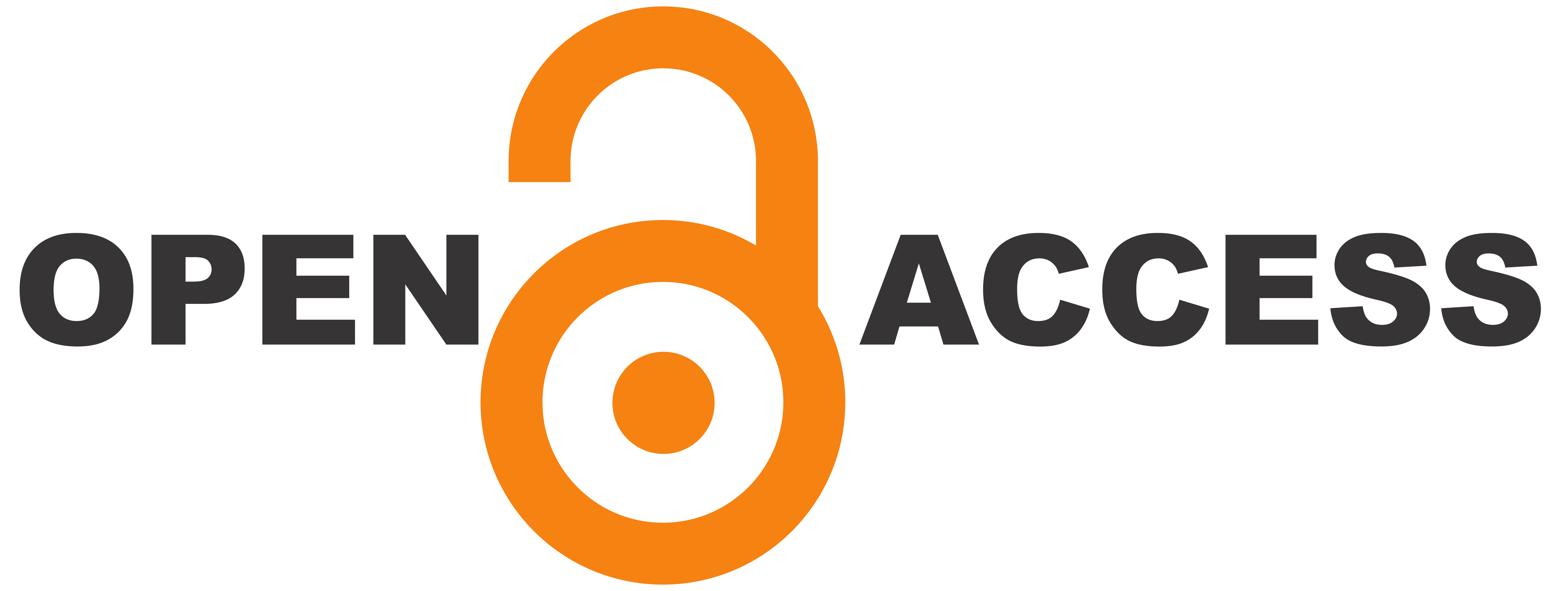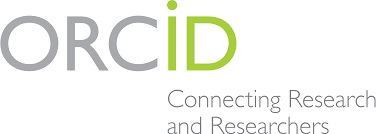Career Planning Behaviors of Sports Sciences Students: Exploring the Role of Economic Factors in Career Dedication
DOI:
https://doi.org/10.71125/sporteconres.13Keywords:
Career dedication, faculty of sports sciences, studentAbstract
This study explores the career planning behaviors of Sports Sciences students, focusing on their career dedication levels within the context of economic conditions and demographic variables. The sample consisted of 174 students from Erzurum Technical University. A relational survey model, which is designed to examine the presence and direction of relationships between variables without manipulation, was employed to identify possible associations between demographic factors and career dedication. Data were collected using a personal information form and the 9-item Career Dedication Scale. Descriptive statistics, t-tests, and Anova were conducted. Tukey’s HSD post-hoc test was applied to determine which specific groups differed from each other. Results showed that female students had significantly higher career dedication than males, while no significant differences were found based on department, age, or academic year. Although overall dedication was high, the lowest score was for participation in additional training activities, indicating financial barriers. Economic constraints may limit students’ ability to engage in essential career development efforts, especially in fields like sports sciences where job opportunities are limited. These findings highlight the role of financial support in sustaining career commitment. Institutions should offer accessible career services, affordable training programs, and targeted support for economically disadvantaged students. Addressing economic disparities is essential to ensure all students can realize their career goals, regardless of financial background.
References
Abid, G., Zahra, I., & Ahmed, A. (2015). Mediated mechanism of thriving at work between perceived organization support, innovative work behavior and turnover intention. Pakistan Journal of Commerce and Social Sciences, 9(3), 982-998.
Akdoğanlı, Ç. (2019). Perceived career barriers: A research on women employees. (Thesis No. 559727) [Master’s dissertation, İstanbul University].
Bacanlı, F., & Büyükgöze-Kavas, A. (2022). Kariyer psikolojik danışmasında çağdaş kuramlar, yaklaşımlar ve modeller. Pegem Akademi.
Bakır, V., & Büyükgöze-Kavas, A. (2021). The role of parental support and socio-demographics variables on children’s career development. The Journal of Buca Faculty, 51, 119-136. https://doi.org/10.53444/deubefd.780311 DOI: https://doi.org/10.53444/deubefd.780311
Bateman, T. S., & Crant, J. M. (1993). The proactive component of organizational behavior: A measure and correlates. Journal of Organizational Behavior, 14(2), 103-118. https://doi.org/10.1002/job.4030140202 DOI: https://doi.org/10.1002/job.4030140202
Blustein, D. L., Duffy, R., Ferreira, J. A., Cohen-Scali, V., Cinamon, R. G., & Allan, B. A. (2020). Unemployment in the time of COVID-19: A research agenda. Journal of Vocational Behavior, 119, 103436. https://doi.org/10.1016/j.jvb.2020.103436 DOI: https://doi.org/10.1016/j.jvb.2020.103436
Cai, Z., Guan, Y., Li, H., Shi, W., Guo, K., Liu, Y., ... & Hua, H. (2015). Self-esteem and proactive personality as predictors of future work self and career adaptability: An examination of mediating and moderating processes. Journal of Vocational Behavior, 86, 86-94. https://doi.org/10.1016/j.jvb.2014.10.004 DOI: https://doi.org/10.1016/j.jvb.2014.10.004
Coetzee, M., & Harry, N. (2015). Gender and hardiness as predictors of career adaptability: an exploratory study among Black call centre agents. South African Journal of Psychology, 45(1), 81-92. https://doi.org/10.1177/00812463145463 DOI: https://doi.org/10.1177/0081246314546346
Crant, J. M. (2000). Proactive behavior in organizations. Journal of Management, 26(3), 435-462. https://doi.org/10.1177/0149206300026003 DOI: https://doi.org/10.1016/S0149-2063(00)00044-1
Çakmak Otluoğlu, K., & Akdoğanlı, Ç. (2019). The effect of perceived career barriers and coping with perceived career barriers on career engagement: research on women employees. Marmara Üniversitesi Kadın ve Toplumsal Cinsiyet Araştırmaları Dergisi, 3(2), 90-108. https://doi.org/10.35333/mukatcad.2020.128 DOI: https://doi.org/10.35333/mukatcad.2020.128
Duffy, R. D. (2010). Sense of control and career adaptability among undergraduate students. Journal of Career Assessment, 18(4), 420-430. https://doi.org/10.1177/1069072710374 DOI: https://doi.org/10.1177/1069072710374587
Fay, D., & Kamps, A. (2006). Work characteristics and the emergence of a sustainable workforce: Do job design principles matter? Gedrag & Organisatie, 19(2), 184-203. https://doi.org/10.5117/2006.019.002.006 DOI: https://doi.org/10.5117/2006.019.002.006
Gardner, S.K., Barnes, B.J. (2007). Graduate Student Involvement: Socialization for the Professional Role. Journal of College Student Development, 48(4), 369-387. https://doi.org/10.1353/csd.2007.0036 DOI: https://doi.org/10.1353/csd.2007.0036
Han, H., & Rojewski, J. W. (2015). Gender-specific models of work-bound Korean adolescents’ social supports and career adaptability on subsequent job satisfaction. Journal of Career Development, 42(2), 149-164. https://doi.org/10.1177/0894845314545786 DOI: https://doi.org/10.1177/0894845314545786
Hirschi, A., & Freund, P. A. (2014). Career Engagement: Investigating intraindividual predictors of weekly fluctuations in proactive career behaviors. The Career Development Quarterly, 62(1), 5-20. https://doi.org/10.1002/j.2161-0045.2014.00066.x DOI: https://doi.org/10.1002/j.2161-0045.2014.00066.x
Hirschi, A., Freund, P. A., & Herrmann, A. (2014). The Career Engagement Scale: Development and validation of a measure of proactive career behaviors. Journal of Career Assessment, 22(4), 575-594. https://doi.org/10.1177/1069072713514813 DOI: https://doi.org/10.1177/1069072713514813
Hoobler, J. M., Lemmon, G., & Wayne, S. J. (2014). Women’s underrepresentation in upper management: New insights on a persistent problem. Organizational Dynamics, 43(4), 221-229. https://doi.org/10.1016/j.orgdyn.2014.08.003 DOI: https://doi.org/10.1016/j.orgdyn.2014.08.003
Hou, C., Wu, L., & Liu, Z. (2014). Effect of proactive personality and decision-making self-efficacy on career adaptability among Chinese graduates. Social Behavior and Personality: An International Journal, 42(6), 903-912. https://doi.org/10.2224/sbp.2014.42.6.903 DOI: https://doi.org/10.2224/sbp.2014.42.6.903
Jaensch, V. K., Hirschi, A., & Spurk, D. (2016). Relationships of vocational interest congruence, differentiation, and elevation to career preparedness among university students. Zeitschrift für Arbeits- und Organisationspsychologie, 60(2), 79-89. https://doi.org/10.1026/0932-4089/a000210 DOI: https://doi.org/10.1026/0932-4089/a000210
Jiang, Z. (2017). Proactive personality and career adaptability: The role of thriving at work. Journal of Vocational Behavior, 98, 85-97. https://doi.org/10.1016/j.jvb.2016.10.003 DOI: https://doi.org/10.1016/j.jvb.2016.10.003
Karasar, N. (2011). Bilimsel araştırma yöntemleri. Nobel Yayınları.
Korkmaz, O., Kırdök, O., Alkal, A., & Akça, M.Ş. (2020). Career engagement scale: Validity and reliability study of the measurement of proactive career behavior. International Social Sciences Studies Journal, 6(72), 4668- 4677. https://doi.org/10.26449/sssj.2570 DOI: https://doi.org/10.26449/sssj.2570
Kuzgun, Y. (2000). Meslek danışmanlığı, kuramlar uygulamalar. Nobel Yayın Dağıtım.
Kuzgun, Y. (2006). Meslek rehberliği ve danışmanlığına giriş (3. Baskı). Nobel Yayınevi.
Leung, S. A., Hou, Z. J., Gati, I., & Li, X. (2011). Effects of parental expectations and cultural-values orientation on career decision-making difficulties of Chinese university students. Journal of Vocational Behavior, 78(1), 11-20. https://doi.org/10.1016/j.jvb.2010.08.004 DOI: https://doi.org/10.1016/j.jvb.2010.08.004
Li, Y., Guan, Y., Wang, F., Zhou, X., Guo, K., Jiang, P., ... & Fang, Z. (2015). Big-five personality and BIS/BAS traits as predictors of career exploration: The mediation role of career adaptability. Journal of Vocational Behavior, 89, 39-45. https://doi.org/10.1016/j.jvb.2015.04.006 DOI: https://doi.org/10.1016/j.jvb.2015.04.006
Lopatto, D. (2004). Survey of undergraduate research experiences (SURE): First findings. Cell Biolgy Education, 3(4), 270-277. https://doi.org/10.1187/cbe.04-07-0045 DOI: https://doi.org/10.1187/cbe.04-07-0045
Martens, M.P., & Felissa K.L. (1998). Promoting life career development in the student athlete: How can career centers help? Journal of Career Development, 25(2), 123-134. https://doi.org/10.1177/089484539802500205 DOI: https://doi.org/10.1177/089484539802500205
McKinsey Company & LeanIn.org. (2020, July). Women in the Workplace 2020. https://womenintheworkplace.com/
Meece, J. L., Parsons, J. E., Kaczala, C. M., & Goff, S. B. (1982). Sex differences in math achievement: Toward a model of academic choice. Psychological Bulletin, 91(2), 324-348. https://doi.org/10.1037/0033-2909.91.2.324 DOI: https://doi.org/10.1037//0033-2909.91.2.324
Muslu, A., & Temur, A. (2021). Adaptation of the Career Engagement Scale that Measures Proactive Career Behavior into Turkish and Confirmatory Factor Analysis Study. Istanbul Gelisim University Journal of Social Sciences, 8 (1), 15-28. https://doi.org/10.17336/igusbd.681944 DOI: https://doi.org/10.17336/igusbd.681944
O'Connell, D. J., McNeely, E., & Hall, D. T. (2008). Unpacking personal adaptability at work. Journal of Leadership & Organizational Studies, 14(3), 248-259. https://doi.org/10.1177/1071791907311005 DOI: https://doi.org/10.1177/1071791907311005
Öncel, L. (2014). Career adapt-abilities scale: Convergent validity of subscale scores. Journal of Vocational Behavior, 85(1), 13-17. https://doi.org/10.1016/j.jvb.2014.03.006 DOI: https://doi.org/10.1016/j.jvb.2014.03.006
Özyürek, R. (2013). Kariyer psikolojik danışmanlığı kuramları: Çocuk ve ergenler için kariyer rehberliği uygulamaları. Nobel Yayıncılık.
Parker, S. K., Williams, H. M., & Turner, N. (2006). Modeling the antecedents of proactive behavior at work. Journal of Applied Psychology, 91(3), 636–652. https://doi.org/10.1037/0021-9010.91.3.636 DOI: https://doi.org/10.1037/0021-9010.91.3.636
Pehlivan, H. (1994). Eğitim Bilimleri Öğrencilerinin Öğrenim Gördükleri Bölümlere Yönelik Tutumları. Hacettepe Üniversitesi Eğitim Fakültesi Dergisi, 10, 49-53.
Presbitero, A. (2015). Proactivity in career development of employees: The roles of proactive personality and cognitive complexity. Career Development International, 20(5), 525-538. https://doi.org/10.1108/CDI-03-2015-0043 DOI: https://doi.org/10.1108/CDI-03-2015-0043
Rigotti, T., De Cuyper, N., & Sekiguchi, T. (2020). The corona crisis: What can we learn from earlier studies in applied psychology? Applied Psychology: An International Review, 69(3), 1-6. https://doi.org/10.1111/apps.12265 DOI: https://doi.org/10.1111/apps.12265
Sangganjanavanich, V. F., & Magnuson, S. (2011). Using sand trays and miniature figures to facilitate career decision making. The Career Development Quarterly, 59(3), 264-273. https://doi.org/10.1002/j.2161-0045.2011.tb00068.x DOI: https://doi.org/10.1002/j.2161-0045.2011.tb00068.x
Schultheiss, D. E. (2021). Shining the light on women’s work, this time brighter: Let’s start at the top. Journal of Vocational Behavior, 126, 103558. https://doi.org/10.1016/j.jvb.2021.103558 DOI: https://doi.org/10.1016/j.jvb.2021.103558
Seibert, S. E., Crant, J. M., & Kraimer, M. L. (1999). Proactive personality and career success. Journal of Applied Psychology, 84(3), 416-427. https://doi.org/10.1037/0021-9010.84.3.416 DOI: https://doi.org/10.1037//0021-9010.84.3.416
Siyez, D. M., & Yusupu, R. (2015). Üniversite öğrencilerinde kariyer uyumluluğu ve kariyer iyimserliğinin cinsiyet rolü değişkenine göre incelenmesi. ISGUC The Journal of Industrial Relations and Human Resources, 17(1), 75-88. https://doi.org/10.4026/1303-2860.2015.0270.x DOI: https://doi.org/10.4026/1303-2860.2015.0270.x
Sora, B., De Cuyper, N., Peiró, J. M., & De Witte, H. (2013). Outcomes of job insecurity climate: The role of climate strength. Applied Psychology, 62(3), 403-427. https://doi.org/10.1111/j.1464-0597.2012.00501.x DOI: https://doi.org/10.1111/j.1464-0597.2012.00485.x
Super, D. E. (1980). A life-span, life-space approach to career development. Journal of Vocational Behavior, 16(3), 282-298. https://doi.org/10.1016/0001-8791(80)90056-1 DOI: https://doi.org/10.1016/0001-8791(80)90056-1
Uçar, S. (2010). Career planning in Turkish police organization and a model suggestion. (Thesis No. 263759) [Master’s dissertation, Süleyman Demirel University].
Veldhoven, M., & Dorenbosch, L. (2008). Age, proactivity and career development. Career Development International, 13(2), 112-131. https://doi.org/10.1108/13620430810860530 DOI: https://doi.org/10.1108/13620430810860530
Yılmaz, İ.A, Dursun, K., Pektaş, B., & Alpay, A. (2012). Career choices of university students in terms of demographic characteristics: The sample of pınarhisar vocational college. Electronic Journal of Vocational Colleges, 2(2), 9-21.
Downloads
Published
How to Cite
Issue
Section
License
Copyright (c) 2025 Muhammet Mavibaş, Yunus Emre Çingöz, Murat Turan, Buğra Çağatay Savaş

This work is licensed under a Creative Commons Attribution 4.0 International License.




